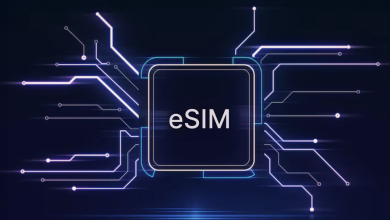
Over the last few years, rising from its inception as a new technology domain, AIOps has emerged as a popular term that is on the lips of many IT leaders. At its core, AIOps is simple and practical — it is essentially applying artificial intelligence (AI) and machine learning (ML) to the automation of IT operations.
To many though, it is a term that has been clouded by fad, hype, and misperceptions, with enterprises latching onto AIOps with overinflated expectations and a bit of magical thinking. So before reaching for AIOps to solve IT challenges, let’s debunk seven common myths on AIOps and how they can make a difference for businesses.
Myth 1 — AIOps is complex and too expensive
Not all AIOps tools are the same. While some tools will still seem like a black box, leaving users in the dark on how their machine learning operates and makes correlations, some others do indeed require a significant time and effort for training, configuration and onboarding. However, not all tools should be tarnished with the same brush and labeled as complex and expensive.
In reality, benefiting from large existing sources of telemetry and operational data, pre-trained ML models can deliver strong and effective results immediately, without any steep learning curves, training periods, or prohibitive pricing. Making it effortless to get the value quickly, and then enabling progressive fine-tuning based on company-specific data and rules as required.
Myth 2 — AIOps is exclusively for large businesses
As you think about the purpose of AIOps, there is no reason why a small team could not reap the benefits by being able to discover operational issues and correlations faster and also decrease the human burden.
Large-scale AIOps deployments requiring lengthy model training and cleaning of data sets may be out of reach for a smaller company. Nonetheless, smaller engineering teams will equally get immediate results and outcomes from effective pre-trained models; and that is what they could ever really need. Regardless of size, every organisation can realise the benefits of AIOps.
Myth 3 — AIOps is all smoke and mirrors
Like most emerging technologies, AIOps has had a lot of products and solutions with exaggerated product capabilities and over-inflated promises. But, businesses and engineers shouldn’t be deterred by this, as many AIOps solutions are now the real deal. For instance, innovative DevOps and SRE teams are now using AIOps 24/7 to detect anomalies automatically and prevent problems before they reach the customer, they are able to cut down on alert noise and alert fatigue, and they can identify the root cause of problems faster than ever before.
Gartner estimates that 10% of organisations are already using AIOps today. This adoption is only set to continue as analysts predict more than 40% of businesses will adopt AIOps over the next two years. AIOps is clearly gaining relevance within the enterprise.
Myth 4 — AIOps is only beneficial in big deployments
Anything AI/ML can bring the temptation of tackling big problems and ambitious goals at the outset, calling for large deployments, big data lakes and significant efforts. AIOps is no different, and many companies aiming high struggle to get their project off-the-ground to production, let alone achieving the results and returns they expected.
In fact, an enterprise will likely see more value, faster, by automating smaller processes and taking a step-by-step approach.
As the business and developers get to grips with AIOps in smaller projects, these small deployments will add up to deliver a result that is greater than the sum of its parts. Through iteration and validation, these teams will build effective AIOps muscle, realising sustainable and demonstrable benefits, and avoiding the delay and risk of the complex or larger projects.
Myth 5 — AIOps is just more tech jargon
AIOps is much more than just a tech fad, or tool for reducing noise or aggregating alerts. The best uses of AIOps proactively detect unusual changes and anomalies, prevent potential problems before they impact end-users, and provide root cause analysis of issues. In this respect, AIOps, combined with access to software telemetry data, is fast becoming a vital aspect of observability. Enabling teams to not only surface unknown issues early but also alert the right team immediately, providing precious root cause analysis, context, and remediation runbooks or automation.
Critically, AIOps provides developers and engineering teams with actionable insight into the occurrence and causes of problems and how to fix them, allowing them to take action much faster and effectively.
Myth 6 — AIOps will replace human jobs
Since the early developments of AI and ML, there has been this idea that human roles can be entirely replaced. I actually think of AIOps as augmenting humans. AIOps itself doesn’t eliminate the need for human work, it simply allows IT teams to be freed from firefighting and costly troubleshooting to focus on higher value activities.
AIOps allows engineers to redirect their resources away from being reactive, to a more proactive approach. It frees up manual troubleshooting time, costly war rooms and guesswork. Giving teams the time and the headspace to work productively, creatively and efficiently—building better software, more resilient systems and innovating to ensure that the business grows.
Also, with complex and volatile software architectures based on 10-100’sf microservices and 100-1000’s containers in the Cloud, AIOps can tirelessly and effectively detect anomalies. Identifying issues that humans may simply be unable to catch through their usual visualization tools and alert policies.
Myth 7 — AIOps fixes problems without human interaction
Well, we may not be that far off and AIOps can already be used to help solve specific problems independent of human support. But we’re not there fully yet.
Today AIOps is predominantly used to detect problems, reduce alert noise, and provide engineering teams with root cause analysis, streamlining the incident management and resolution process. Some observability and AIOps solutions already seamlessly integrate with incident management and automation tools, enabling incident workflow automation, but also automated remediation and runbook execution.
This already delivers strong value, efficiency and effectiveness. And yes, still requires the value-added of human knowledge and know-how to define which automated workflows and runbooks should be executed based on the very specific issue to be solved in its full context. Making fully autonomous decisions on any incident remains the next frontier for AIOps.
AIOps – Breaking through the hype
AIOps may not be the holy grail to tackle every challenge of DevOps teams or data processing, but when integrated with observability and software telemetry it has huge potential. Providing tangible and immediate benefits to organisations through proactive anomaly detection, noise reduction, root cause analysis, incident workflow automation and enhanced observability capabilities.
As our industry moves forwards and we look beyond the myths and hype, we will continue to use AI, ML and data analytics to innovate, and expand to new use cases. From cybersecurity to protecting against outages, to improving customer experience, or writing high quality and high performance software, it will be the businesses that embrace observability that realise the full benefits of AIOps.





